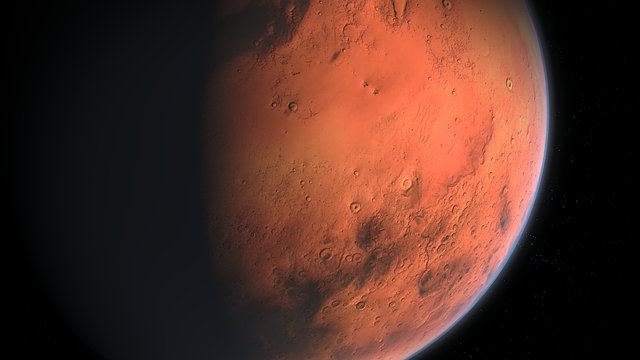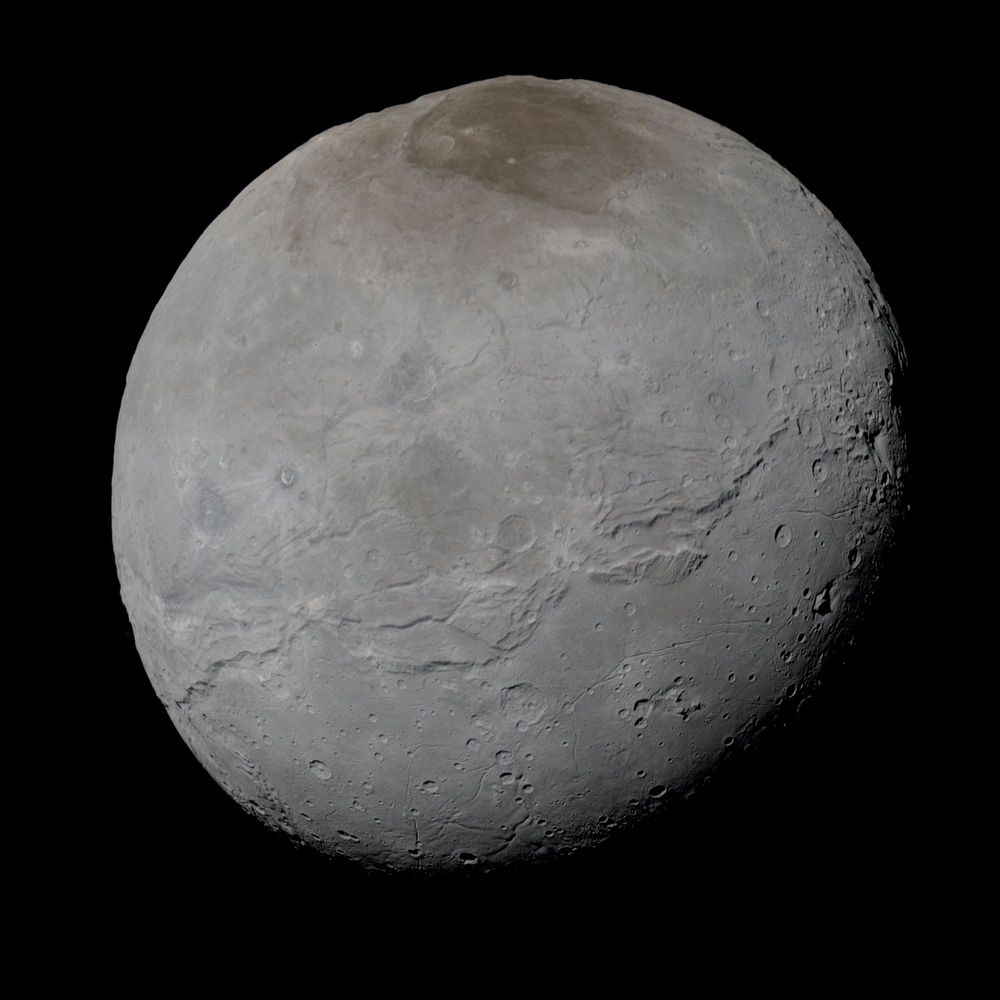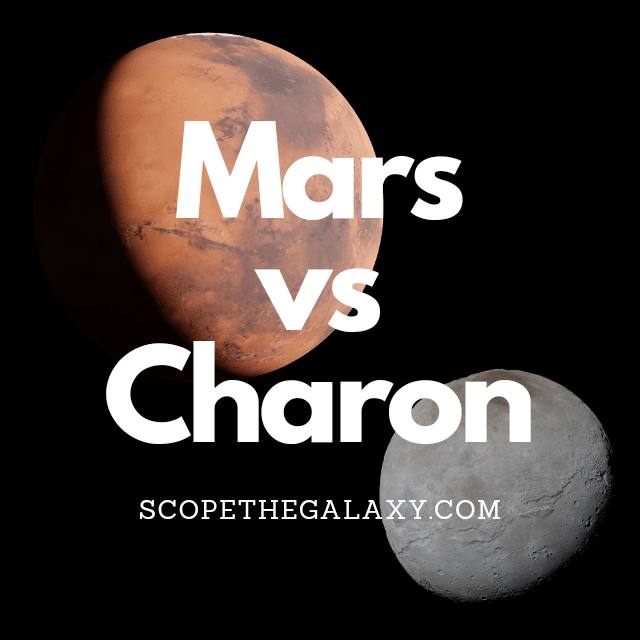*This post may contain affiliate links. This means we may make a commission if you purchase an item using one of our links*
The main differences between Mars and Charon are that Mars is the 4th farthest planet form the Sun whilst Charon is joint the 9th farthest entity, Mars is bigger with a diameter of 6,779km whilst Charon’s diameter is 1,212km, Mars has 2 moons orbiting it whilst Charon has 0 and Mars is an official planet whilst Charon is a natural satellite.
There are various other differences between the two so, continue reading for a more detailed look at each celestial body along with their similarities and differences below.
What Is The Planet Mars?
Table of Contents

Mars, also known as the red planet, is the celestial object that’s the front runner in our entire solar system to become a possible new home for us if terraformed. It is also the 4th farthest planet from the Sun and is one of 4 main line terrestrial planets (not including Pluto) in our solar system.
This means that one year on Mars will take roughly 687 Earth days and a day on Mars is roughly the same as Earth at 24 hours and 37 minutes. It’s axial tilt is also very similar to that of Earth where it is positioned around 25 degrees to the right.
It may not be the largest terrestrial world in our solar system as its diameter is only 6,779km but, it does have the most moons amongst the normal terrestrial planet where two, namely Deimos and Phobos, are currently orbiting the red planet.
Like Earth and the other terrestrial worlds, Mars does have an atmosphere, certainly more visible than that on Mercury but, when compared to Earth’s it is merely 1% of its volume.
As a result it is more susceptible to larger debris striking its surface and is unable to trap in too much heat either. This is why it’s on the colder side with a temperature of around -65 degrees Celsius on average. On the contrary its core is significantly hotter at 1,350 degrees Celsius.
Mars is probably the most explored planet outside of our own, with a multitude of rovers like Sojourner (1997–1997), Opportunity (2004–2018), Spirit (2004–2010), Curiosity (2012–), and Perseverance (2021–) that have landed on the Martian soil to explore it.
Billionaires like Elon Musk and even Jeff Bezos are trying for an opportunity to genuinely have astronauts land on the Martian soil, possibly as early as 2029 so, Mars clearly has a lot interested in its terrain, as a potential substitute for Earth in the future.
What Is The Moon Charon?

Charon is the largest of Pluto’s moons, first discovered on 22nd June 1978. The surface of this icy world is frozen with nitrogen and methane ice; it may also hold some water ice. While Pluto possesses a reddish hue, Charon is closer to a neutral shade of grey; this suggests the two bodies have different compositions.
Scientists named this moon after the mythical ferryman, Charon, who once carried souls across the Acheron river. This river is one of five legendary rivers that could lie beneath the surface of Pluto.
The formation of Charon remains something of a mystery to scientists. However, this moon may have formed around 4.5 billion years ago when an object traveling at immense speed collided with Pluto. Its average distance from the Sun is approximately 3.6 billion km.
Charon is almost half the size of its planet at 1,212km, where scientists refer to these two bodies as a “double dwarf planet system,” and the chilly temperatures vary from minus 23 to minus 258 degrees Celsius.
Charon takes 153 hours to orbit its planet at an average distance of 19,640km, and it is tidally locked, meaning the same side of the moon always faces Pluto. Pluto also experiences a tidal lock to Charon, so the same two sides always face one another.
Among the fascinating features of this ice moon are the ice volcanoes that could exist on the surface. Observations from the Gemini observatory suggest that Charon could have a form of cryovolcanism known as ice-particle geysers.
The frigid world also has a canyon between seven and nine kilometers deep. (To put that into perspective, Mount Everest has a height of 8.8km).
Similarities Between Mars And Charon
Charon and Mars do have a few similar features, which would include the below:
- Both have a hotter central core.
- Both are terrestrial based entities.
- Both have an atmosphere and a rocky surface.
- Both are spherical in shape.
- Both have no rings surrounding them.
- Neither have tectonic plate activity.
Differences Between Mars And Charon
In regards to the differences between the two, they include the following:
- Charon is smaller with a diameter 1,212km compared to Mars’ 6,779km.
- Mars is a planet whilst Charon is a natural satellite.
- Mars has 2 moons whilst Charon has 0.
- Mars orbits the Sun in a nearly circular pattern whilst Charon orbits Pluto and the Sun.
- A day on Mars takes 24 hour and 37 minutes whilst a day on Charon is 153 hours.
- Mars orbits the Sun in 687 days whilst Charon orbits the Sun in 247.78 years.
- Mars has an axial tilt of 25 degrees whilst Charon’s axial tilt is straighter and closer to 0 degrees in comparison.
- Charon’s average temperature is -23 to -253 degrees whilst Mars has an average temperature is -65 degrees Celsius.
- Charon’s atmosphere is near enough non-existent whilst Mars has an atmosphere that is 1% the thickness of Earth and composed of 95% carbon dioxide with smaller amounts of nitrogen, molecular carbon monoxide and argon.
- Charon’s gravity is 0.288 m/s² compared to Mars’ that is 3.721 m/s².
- Mars has a mass of 6.39 × 10^23 kg whilst Charon’s mass is 1.58×10^21 kg.
- Charon has a density of 1.71 g/cm³ whilst Mars has a density of 3.93 g/cm³.
Summary
Although Mars and Charon have similar features such as their terrestrial composition and the fact both are in the same solar system but, the differences that they have are more vast.
Whether it be in regards to mass, size, temperature, density and beyond, Mars and Charon are designed to be very different from one another and in turn function very distinctly from one another within our solar system.

